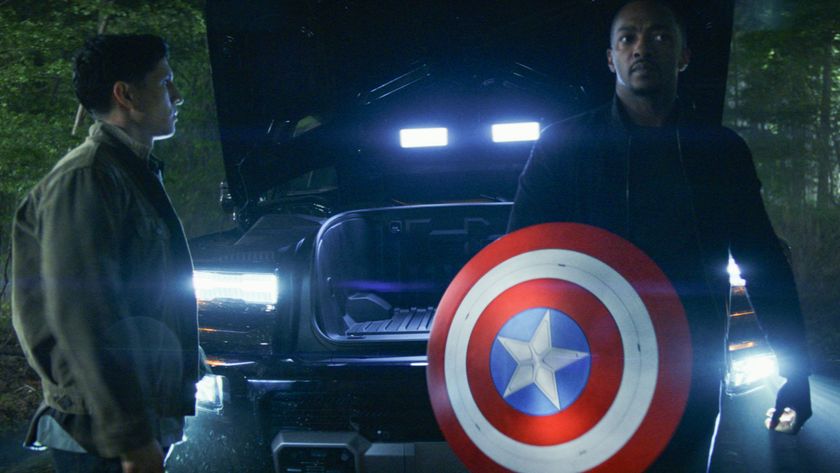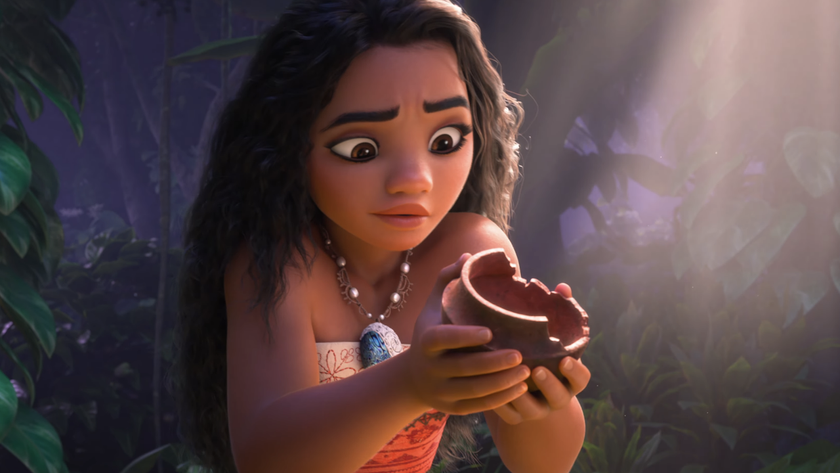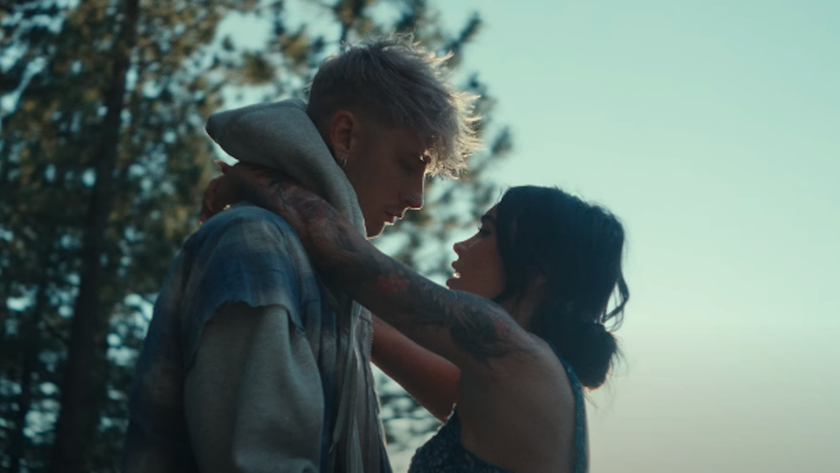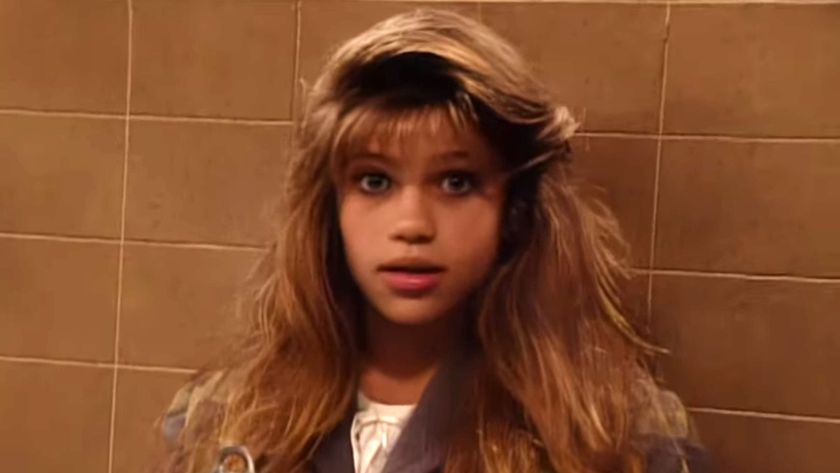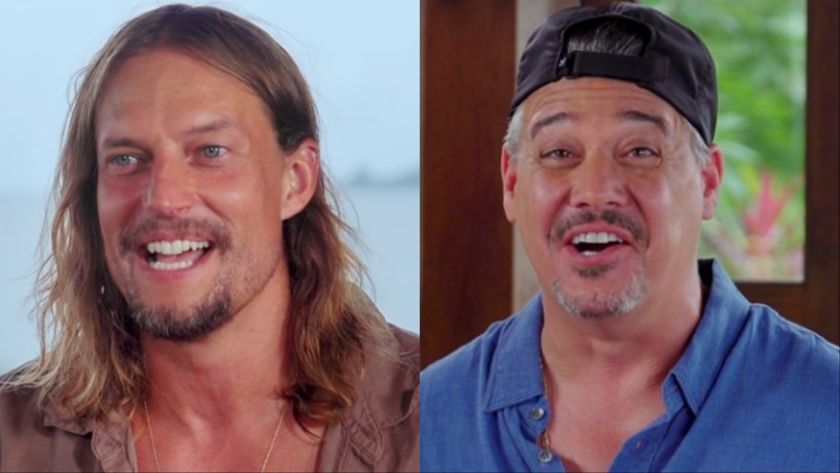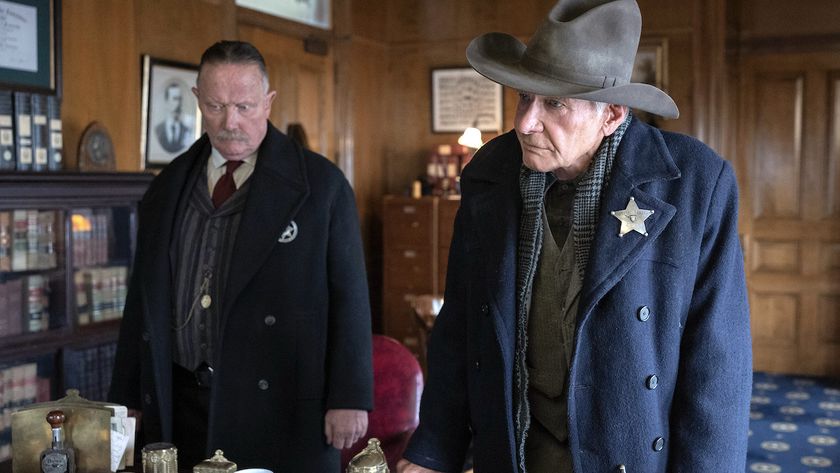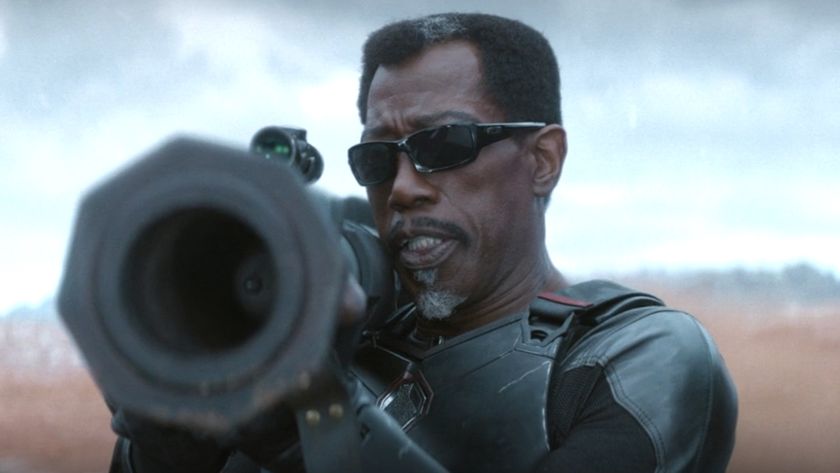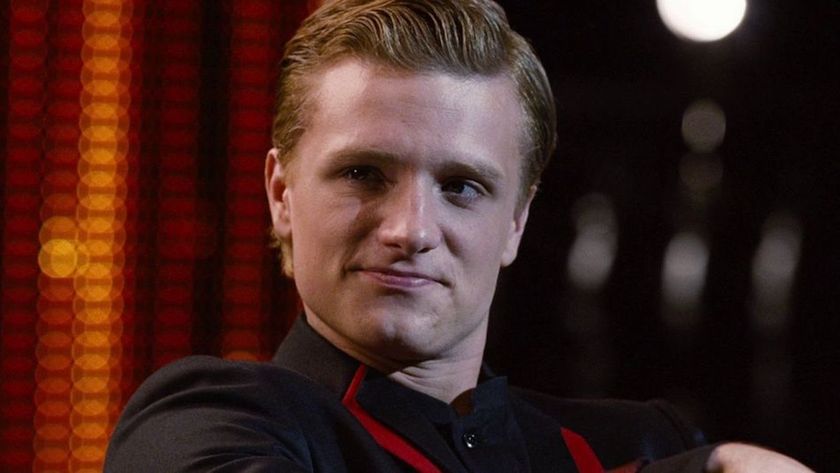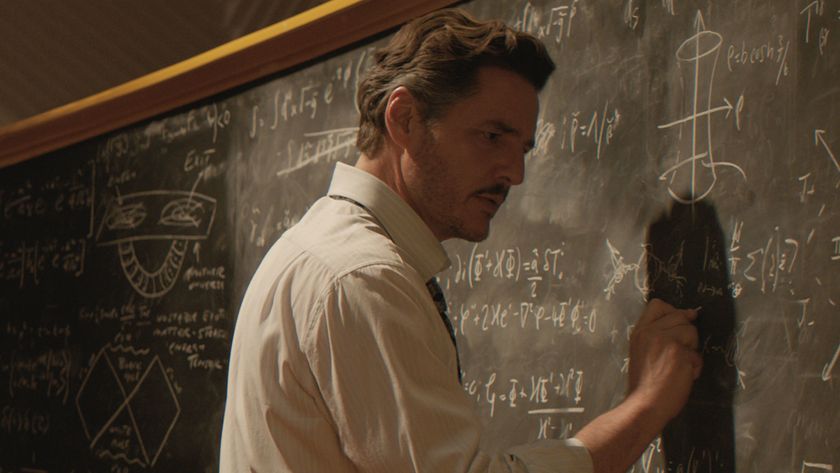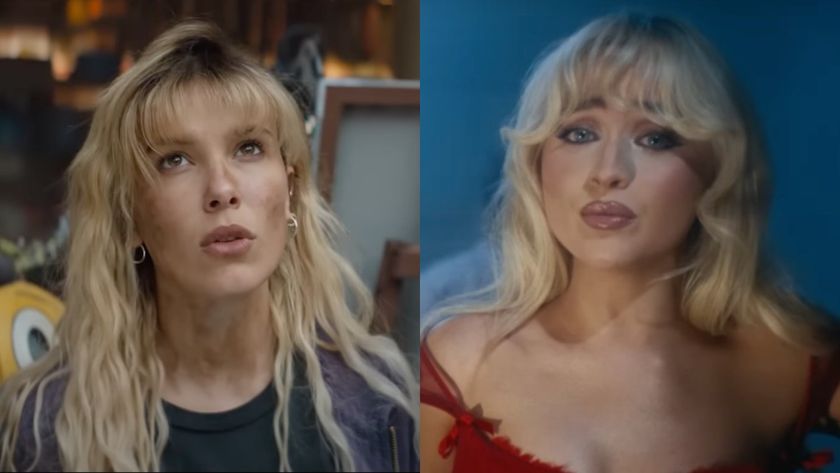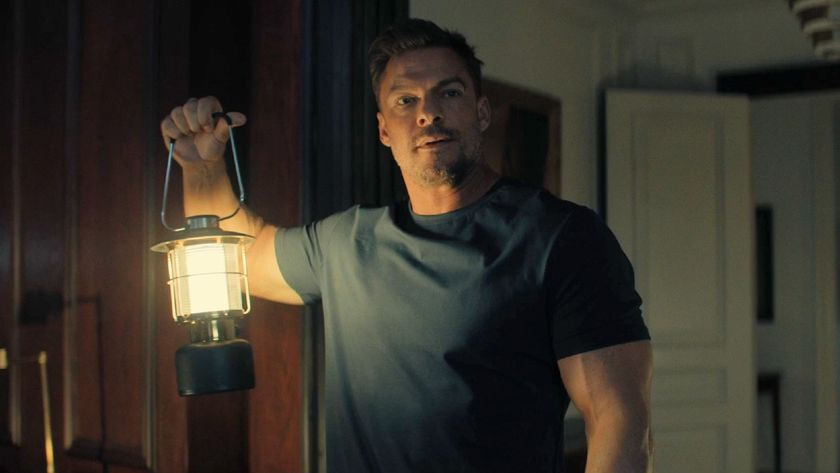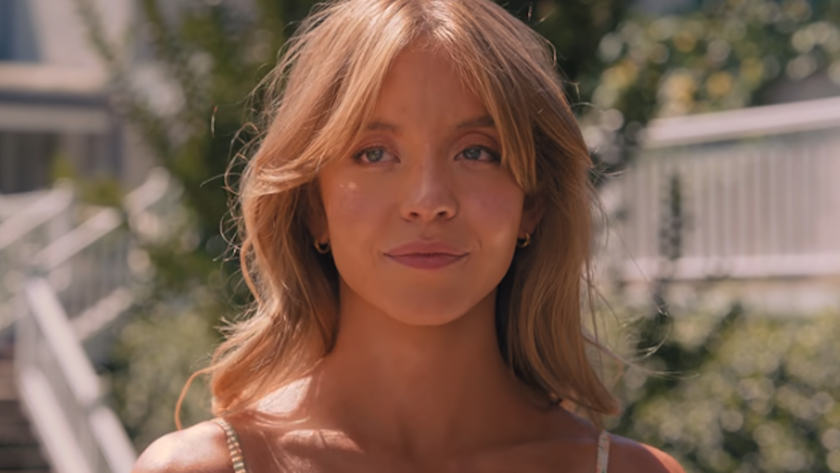To 3D Or Not To 3D: Buy The Right Oz The Great And Powerful Ticket
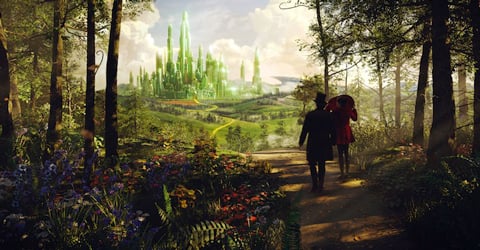
Three years ago Disney released Tim Burton's Alice in Wonderland as the first huge 3D film to come out after Avatar, and they were rewarded with a monster hit. Promising another return to a brightly colored and fantastical world, Alice filled an audience desire to experience that kind of 3D spectacle again-- even though, with post-converted 3D effects that were often muddy and confusing, its 3D wasn't early up to the standard Avatar had set.
Now Disney is back with Oz the Great and Powerful, which is kind of like a spiritual sequel to Alice-- a 3D movie set in a familiar fantasy world that seems to demand to be seen on the big screen. Given how far 3D technology has come in the last three years, Oz seems to be offering an even better experience than Alice, especially with the playful Sam Raimi-- who never misses an opportunity to make the audience jump in their seats-- behind the camera. Does Oz live up to its 3D potential? Is it really worth the extra money to slap some 3D glasses on your face?
That's the question we're here to answer with the latest installment of To 3D or Not To 3D, in which we put Oz the Great and Powerful through the wringer to help you buy the best ticket. For our review of the movie, which Eric called "a fun return to the merry old land, " click here. To dig deep into the film's 3D, keep reading.
Does 3D Fit?
?Aside from simply being a large-scale special effects movie heavy with CGI, which are generally always suited to 3D, Oz the Great And Powerful's 3D comes with a sentimental streak. Everyone remembers the phenomenal moment in the original Wizard of Oz when Dorothy opened the door into the bright Technicolor land of Oz. This Oz contains the same effect of switching from sepia tones to color, but it also ramps up the 3D, making Oz a deeper and more immersive place than the Kansas that the Wizard left behind. It's a beautiful homage to cinema history-- and an argument that this movie can't really be properly understood unless you see it in 3D.
Fit Score: 5/5
Planning & Effort?
?
CINEMABLEND NEWSLETTER
Your Daily Blend of Entertainment News
Oz the Great And Powerful headed toward production immediately after Disney dominated the box office with Alice in Wonderland in the spring of 2010, and it was clear from the start that Oz too would be an effects-heavy 3D film. Director Sam Raimi then took the 3D immersion a bit further than Alice, shooting with Red Epic 3D cameras even before adding the extensive CGI effects in post-production. Alice was a huge hit despite less-than-exceptional 3D, and three years later, Disney, Raimi and their 3D crew put a lot of planning into making Oz exceptional.
Planning & Effort Score: 5/5
Before the Window?
?For some, the "before the window" score is where 3D films can become gimmicky, throwing objects out toward the screen-- or "before" the window through which you're looking into the world-- and into the audience's lap. But for me, and apparently for Sam Raimi, this is the entire purpose of 3D. Showing clear signs of being the gross-out showman who conjured up the menacing tree in The Evil Dead, Raimi startles the audience as much as possible in 3D, throwing spears and menacing fenceposts out toward the audience to ramp up every moment of terror. Even in the gentler moments he's constantly putting the 3D out there, with snowflakes drifting toward us to mark The Wizard's arrival in Oz or a flying fairy zooming off the screen. Some of the most striking "before the window" moments come in the sepia-toned, square aspect ratio Kansas scenes that involve magic, like the Wizard tossing a curtain toward a foe to help in a disappearing trick. Not only does Oz have some of the most striking "before the window" effects of any modern 3D film, but it has the most fun with them.
Before the Window Score: 5/5
Beyond the Window
?The "beyond the window" category is where we look for the more familiar 3D effects of depth, as if you're looking through a window in a world that stretches on endlessly past you. The land of Oz is expertly designed to be exactly that, and by combining practical sets with CGI Raimi and his crew allow the sense of depth to be much greater than in, say, Alice in Wonderland. You don't just feel the CGI effects that create an infinite universe impossible to recreate in reality, but the tactile depth of the sets that were really there, from the expansive Emerald City to the figures just a bit further away in the magical fog that Glinda summons. The entire dazzling effect of Oz arriving into this magical world relies on the depth of 3D, and that "wow" moment lasts throughout the entire film.
Beyond the Window Score: 5/5
Brightness
?As a movie for children using the same production designer (Robert Stromberg) who brought us both Avatar and Alice in Wonderland, Oz the Great and Powerful was always going to be aiming for maximum brightness. The 3D effects, which basically require you to wear sunglasses indoors to see them, do nothing to get in the way of all the big, bright scenery. With 3D this expertly planned, there's no way they would have let that happen.
Brightness Score: 5/5
The Glasses Off Test
?If at any point when watching a 3D film you suspect that there's not as much depth as you want, take off your glasses. The more blurry the image is, the more 3D "pop" you'll see when you put the glasses back on. But do yourself a favor in Oz and don't do this test during the sepia-toned Kansas scenes. The 3D there is deliberately kept to a minimum, all to make the effect of his arrival in Oz that much more spectacular. Once you're in that magical land, though, give the glasses-off test a few tries. You may be constantly amazed by how much depth there is even in the quietest scenes, even in faces right up close to the camera (which are generally kept flat in most 3D films). It's as if the people who made Oz the Great and Powerful had always wanted a tour of this land, and have come back with the deepest 3D experience possible to help us experience it ourselves.
Glasses Off Score: 5/5
Audience Health?
Much like The Wizard of Oz itself, Oz the Great and Powerful is pretty low on big action scenes, which are generally the place where 3D effects get jostled and the audience starts to feel seasick. Like everything else in this movie, the scenes are carefully staged to take advantage of the 3D, and it's unlikely your eyes will get confused in the way that has you lurching. 3D movies in general have gotten very, very good at avoiding making you nauseous since the bad old days of Clash of the Titans, and as an exceptional 3D film, Oz is perfect on this score too.
Audience Health Score: 5/5
| SCORES RECAP | |
| 3D Fit | 5 |
| P&E | 5 |
| Before The Window | 5 |
| Beyond The Window | 5 |
| Brightness | 5 |
| The Glasses Off Test | 5 |
| Audience Health | 5 |
| Total Score | 35 (out of a possible 35) |
Final Verdict: This is the first perfect score I've given for a 3D film since Hugo, and I mean it. Oz the Great and Powerful doesn't have quite the same moving reason for its 3D, but it also hearkens back to old-fashioned cinematic tricks, and contains a sense of showmanship and spectacle that takes advantage of the 3D at every possible moment. Imagine seeing The Wizard of Oz on a black and white television, never experiencing the beautiful transition into Oz's Technicolor world. That's the same effect you'll get if you skip seeing Oz the Great and Powerful in 3D. Pay the extra few bucks. It's beyond worth it.
This poll is no longer available.
Staff Writer at CinemaBlend

